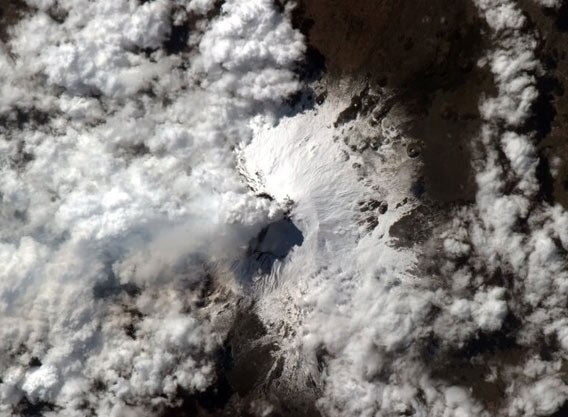Create a free profile to get unlimited access to exclusive videos, sweepstakes, and more!
Looking Down Mount Etna’s Throat

The tallest active volcano in Europe is at it again. Sicilyâs Mount Etna, a 3300-meter (2 mile) high mountain, is always active. Well, almost always: Itâs been fairly quiet for nearly a year, but on Feb. 19 decided it was time to remind folks that itâs a force with which to be reckoned. It started blowing out ash, lava, lahars (mud flows), and pyroclastic flowsâavalanches of burning hot ash, rock, and gas.
On board the International Space Station, the ash plume was easily visible as the astronauts flew just to the north of it:
You can see the ash plume flowing east (left) over the coast of Sicily. The plume looks white, which means thereâs probably lots of steam there too. To give you a sense of scale, the volcano is about 15 or so kilometers (9 miles) from the coast.
That shot was taken by Chris Hadfield. His fellow astronaut Kevin Ford took the following picture, when the ISS was more directly over the volcano:
Looks like the wind had died down a bit for this one. This series of recent eruptions have been pretty violent, with seven large paroxysms in just over a week. The first were from the New Southeast Crater (Etna has a half dozen major craters), and were followed by eruptions from the Bocca Nuova Crater. Not only that, but apparently there has been activity seen in the saddle between the two craters, so it looks like at least one new fissure has opened up.
Etna is potentially dangerous, but hasnât hit a major population center in nearly a century (though itâs come close). Still, like any giant of its kind, it bears close watch. Size isnât whatâs criticalâitâs the type of activity that makes a volcano dangerous, including the locations of the nearby populationsâbut bear in mind this volcano is more than twice the height of Vesuvius, and the entire cone is roughly 40 km (25 miles) across. Itâs been chosen as a Decade Volcano, one that is worthy of study due to its violent nature and potential for mayhem.
Iâd imagine pictures from above are helpful for just this sort of thing. As we put more and more eyes in space, ones that look down, weâll be seeing more amazing and important observations of volcanoes. Perhaps itâs my own fascination with astronomical dangersâSun storms and asteroids and black holes, oh my!âbut I love these pictures of more terrestrial dangers, too.














